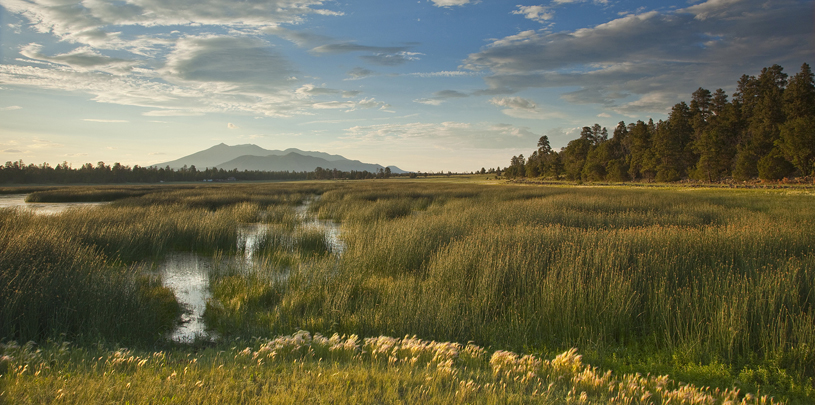
 by Rick Moore, Clean Energy & Efficiency Director
by Rick Moore, Clean Energy & Efficiency Director
Cities, with their air-conditioned buildings, appliance-filled homes, and endless streams of traffic, consume roughly 80 percent of the world’s energy and produce more than 70 percent of global carbon-dioxide emissions. Given the emissions from cities and the Trump administration’s skepticism regarding climate change and withdrawal from the Paris Climate Agreement, cities are taking a leadership role to combat climate change by developing climate action plans to reduce their greenhouse gas emissions.
Wanting to do its part, the Flagstaff City Council adopted the goal in early 2017 of “taking meaningful action on climate change” and directed the city’s sustainability staff to develop a climate action plan for city operations and the community. In October, the city hired a consultant to develop the Flagstaff Climate Action and Adaptation Plan, which will focus on reducing greenhouse gas emissions and preparing to respond to the predicted impacts of climate change. The goal is to complete the plan by October 2018. The city is committed to including the ideas and concerns of Flagstaff residents as it develops the plan and is kicking off the planning process with an open house at the Flagstaff Aquaplex on Wednesday, January 24, from 5:30 to 8:00 p.m.
Major components typically include:

The short answer is yes, if the plan is well thought out and the city and community are willing to take action. Take Fort Collins, for example. According to the 2016 Fort Collins report on the progress achieved under their climate action plan:
Fort Collins achieved these results, while increasing its economy by 28 percent and population by 23 percent. In recognition of its exemplary efforts, Fort Collins was recently named the winner of the of the Cities4Action Award at the North America Climate Summit. Learn more about the status of the Fort Collins effort ›
Temperatures in northern Arizona are projected to rise from about 2 degrees to 10 degrees Fahrenheit by 2100. While precipitation is projected to remain about the same, the increase in warmth will mean more evaporation and more use of water by plants, leading to drier soil conditions. Snowpack is expected to decrease (and probably disappear), and large wildfires will likely increase. Flooding will become more prevalent. How much the temperature increases will be dependent, in part, on the actions we take to cut our greenhouse gas emissions.
The good news is that cutting our emissions provides many benefits, including:
The Grand Canyon Trust is a founding member of the Flagstaff Climate Action Council, a group of citizens, organizations, and businesses concerned about climate change. Both the Trust and the FCAC support the Flagstaff Climate Action and Adaptation Plan and other efforts to reduce greenhouse gas emissions. To learn more, contact:
The City of Flagstaff will host the first public open house to provide information on the plan and to gather thoughts of local residents at the Flagstaff Aquaplex, January 24 from 5:30 – 8:00 p.m. We hope to see you there, but if you can’t attend, you can contribute your thoughts by filling out the city’s survey.
Did you know the Colorado River used to be called the Grand River? Learn about the name change and more fun facts about this hardworking river.
Read MoreChallenging conditions have endangered, threatened, or imperiled these five native fish in the Grand Canyon.
Read MoreBeneath the bathtub ring at Lake Powell, native plants are flourishing, cultural sites are resurfacing, and whitewater rapids are returning.
Read More